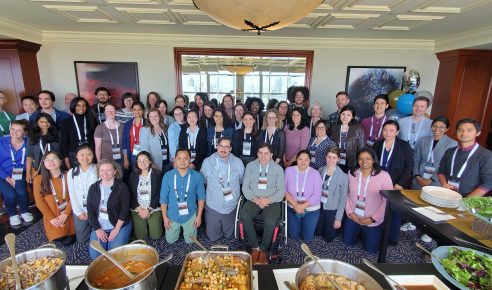Maia Sosa Kapur attended this year’s rstudio::conference in San Francisco. Her attendance was supported by a Diversity Scholarship (from rstudio). Maia completed a 2-day workshop in machine learning in the tidyverse. While machine learning (ML) has not really been incorporated into stock assessment, the method may be useful for the analysis and development of simulation studies in our field. Indeed, a recent paper in PNAS applied a robotics-based algorithm which outperformed traditional MSY-based fishery management strategies. A relevant topic discussed was model ensembling, which in fisheries modeling typically refers to the process of averaging information from different model structures.
Following her exposure to the tidyverse, Maia produced a brief guide for automating simple CPUE standardizations hosted on her personal blog here. Aside from ML applications, the tidyverse is a very versatile framework for automating transparent modeling workflows.

